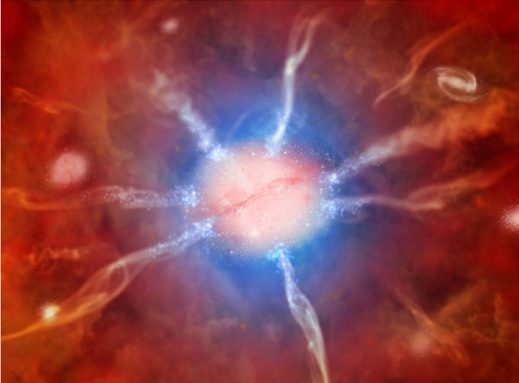Super star-maker
A distant galaxy cluster churns out stars at a whopping rate

The recently discovered Phoenix cluster is a big deal. About 6 billion light-years away, it’s home to thousands of galaxies and one of the biggest known things in the universe. And Phoenix is the fastest known star-making factory, a new study finds.
One would expect the cluster to produce fewer than one star per year. Instead “it’s producing 740,” observes MIT astrophysicist Michael McDonald. He worked on the new study about Phoenix, published in August. Astrophysicists use ideas about matter and energy from physics to understand what they observe in space.
Phoenix can make so many stars because its core is so cold. Astronomers say that the cluster’s center probably hides a supermassive black hole, about as hefty as 10 billion suns smooshed together. Though it may be giant, that black hole is pretty quiet. But a quiet black hole can really boost star production, say the researchers.
Stars form from clouds of gas. Most black holes, however, heat up their neighborhoods to such high temperatures that nearby gas clouds can’t cool enough to stick together and form stars. That’s not the case with Phoenix: Its black hole isn’t superhot. Maybe it’s taking a break.
Whatever the reason, gas near this black hole can cool off and form star-building clumps at a rapid rate.
“Stars are forming at a much higher rate than we’ve seen before in any of these galaxies,” says astrophysicist Martin Rees at the University of Cambridge in England. Rees did not work on the study. “It’s a fascinating step toward putting this picture together of the tussle between the black holes and the star formation,” Rees told Science News.
McDonald and his colleagues studied the cluster using the South Pole Telescope, a giant radio dish that stares into space from the bottom of the world. Using data from the telescope, astronomers calculated that at the center of the Phoenix cluster lies a galaxy about 50 times larger than our galaxy, the Milky Way.
“It’s kind of the boss galaxy,” McDonald told Science News.
That central galaxy holds the black hole. McDonald suspects that scientists watching the cluster caught it during a burst of unusual star production, and that this manic pace won’t last. But for a black hole, even a burst can last a long time.
“I think something around 100 million years is reasonable,” McDonald said.
Power Words
black hole A region of space having a gravitational field so intense that neither matter nor radiation — including light — can escape.
galaxy A system of millions or billions of stars, together with gas and dust, held together by gravity.
galaxy cluster A group of galaxies held together by gravity. Galaxy clusters are the largest known objects in the universe.
light-year The distance light travels in a year through a vacuum, or empty space. About 6 trillion miles.







